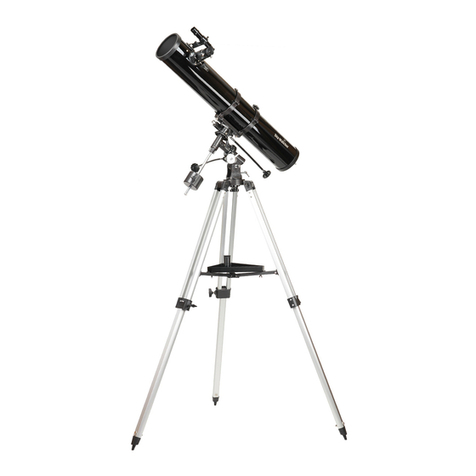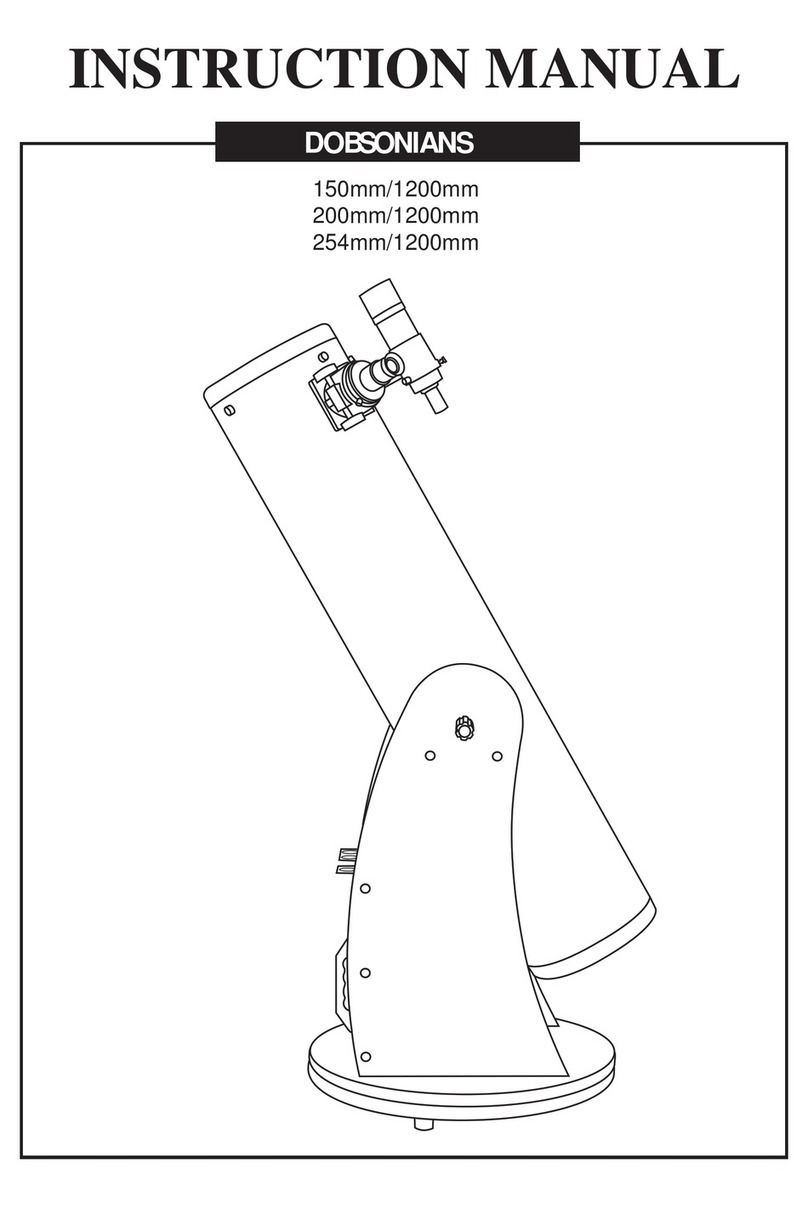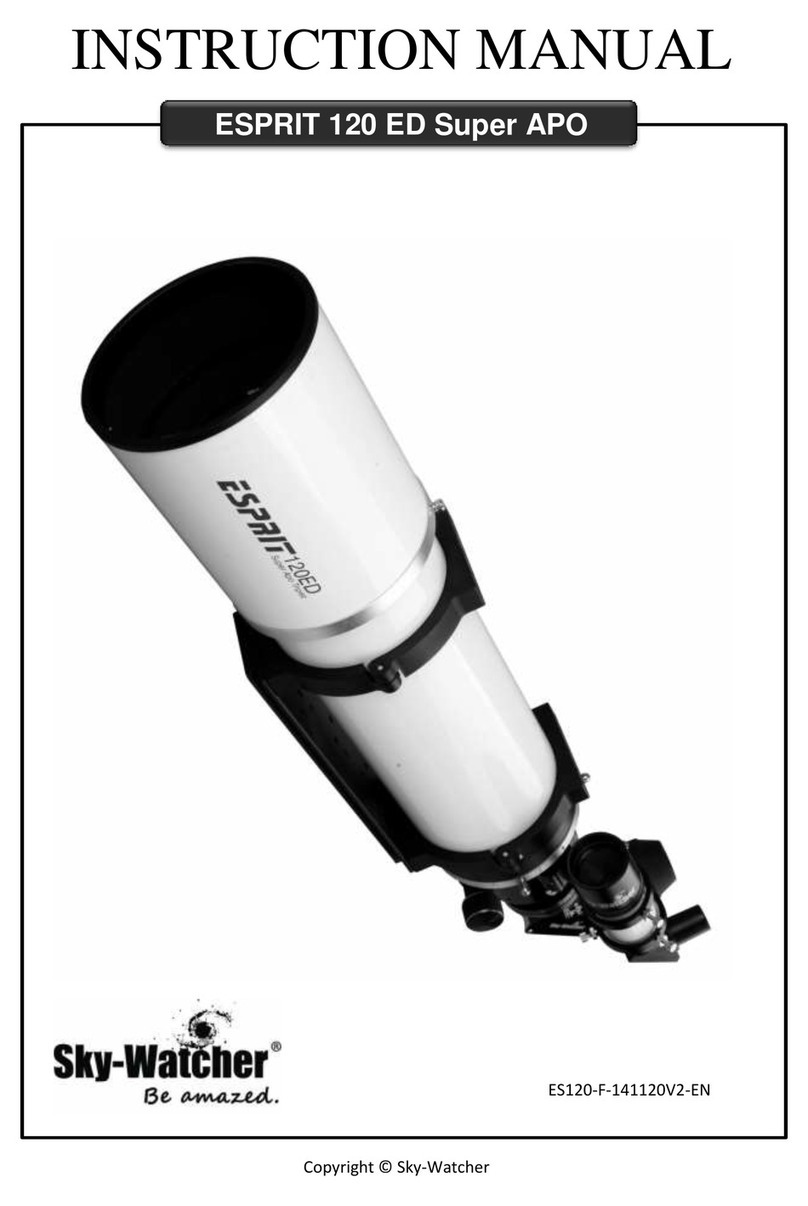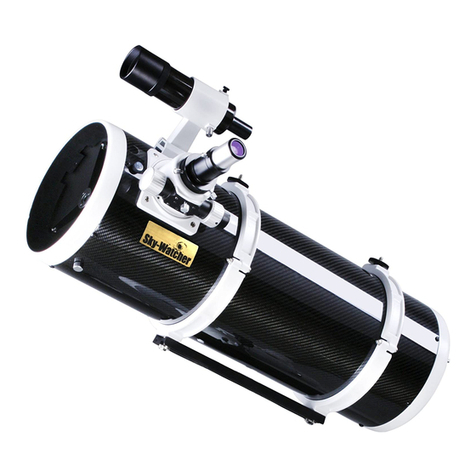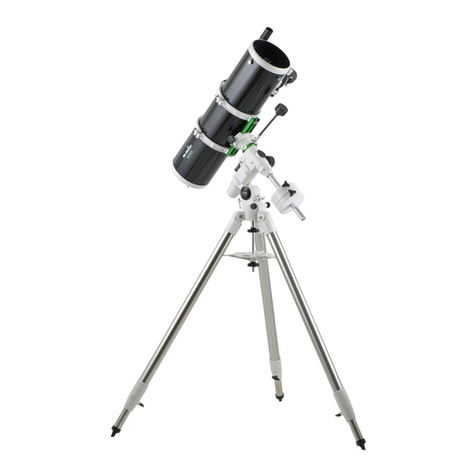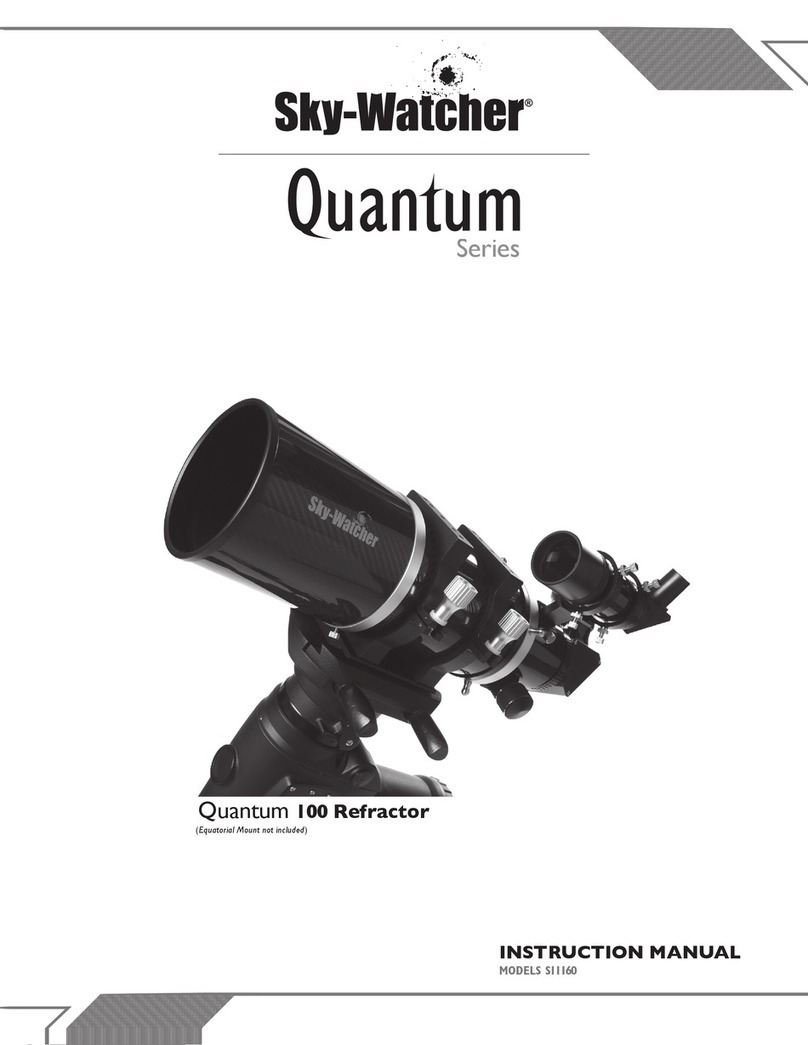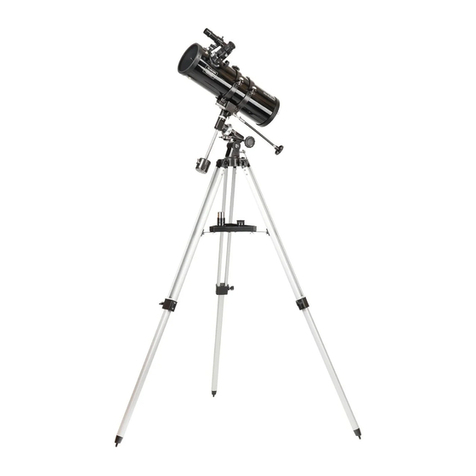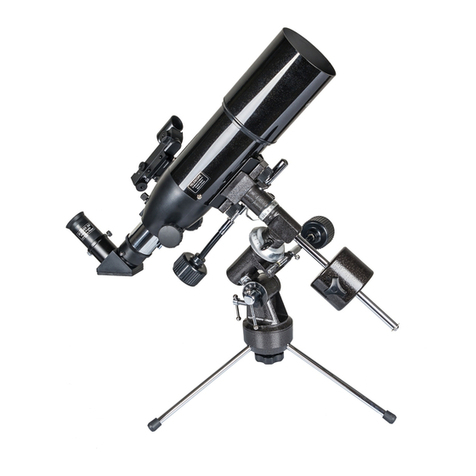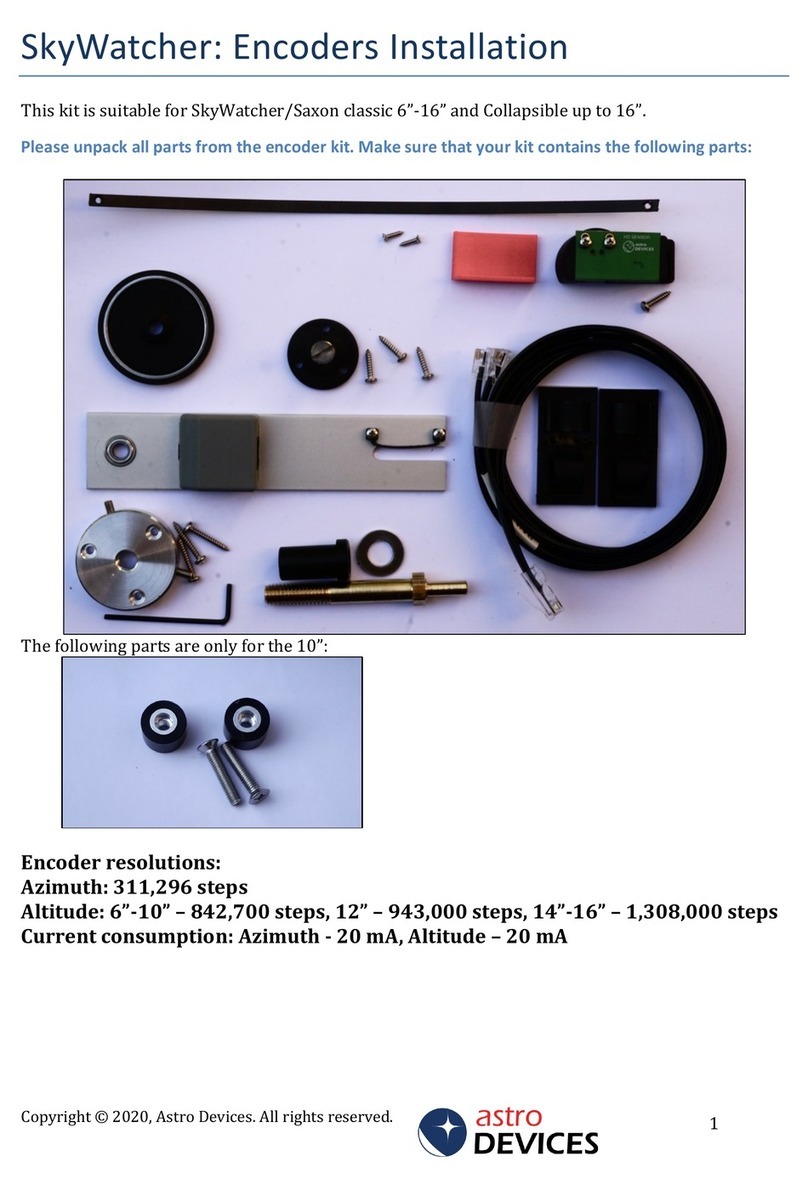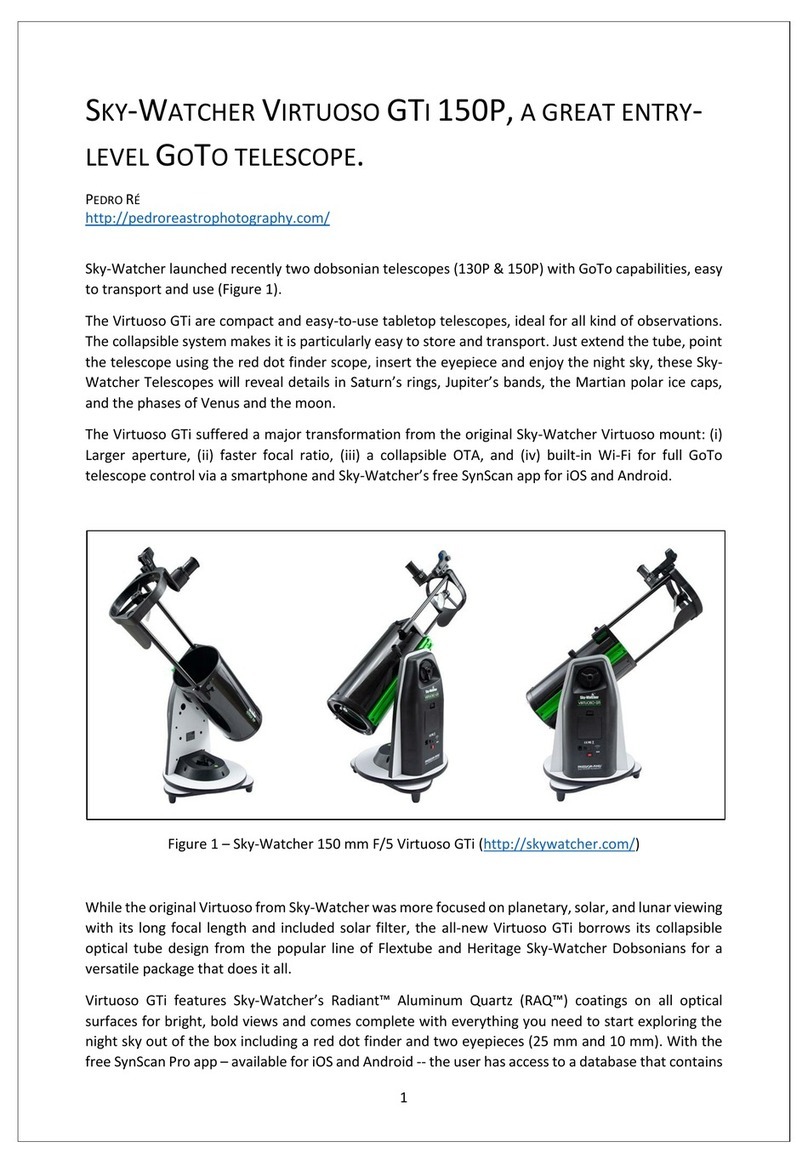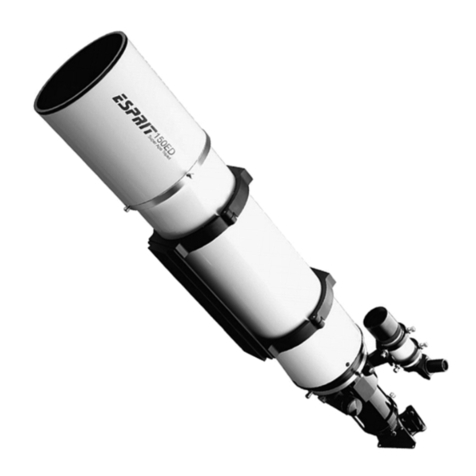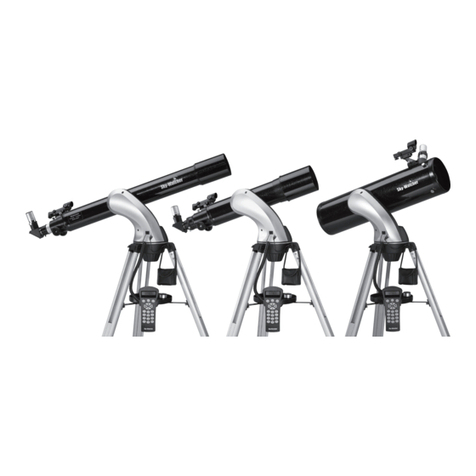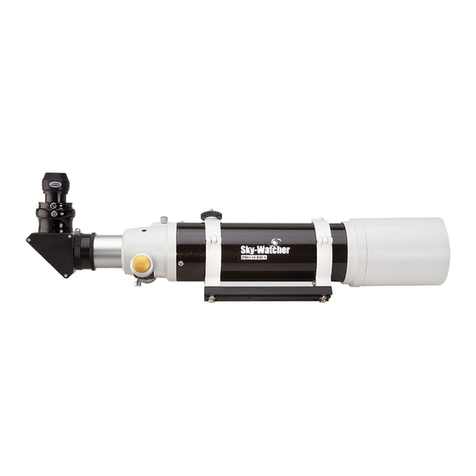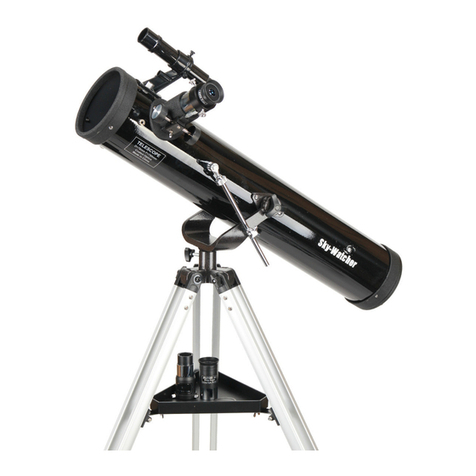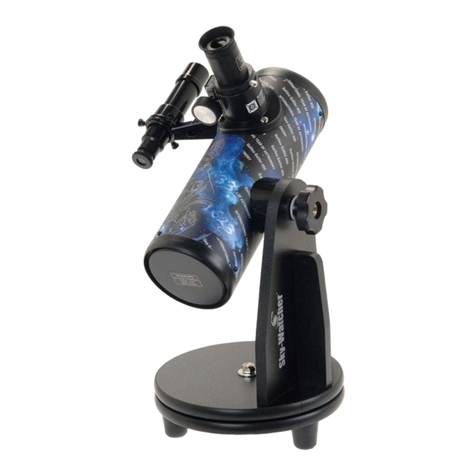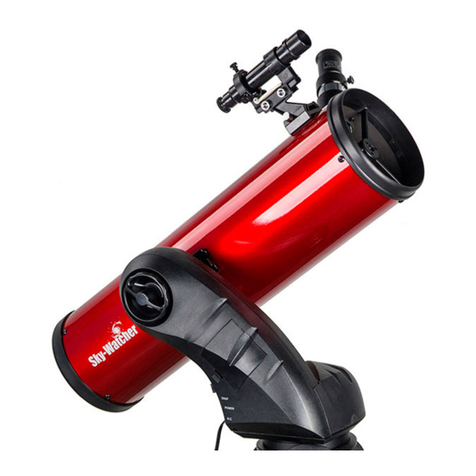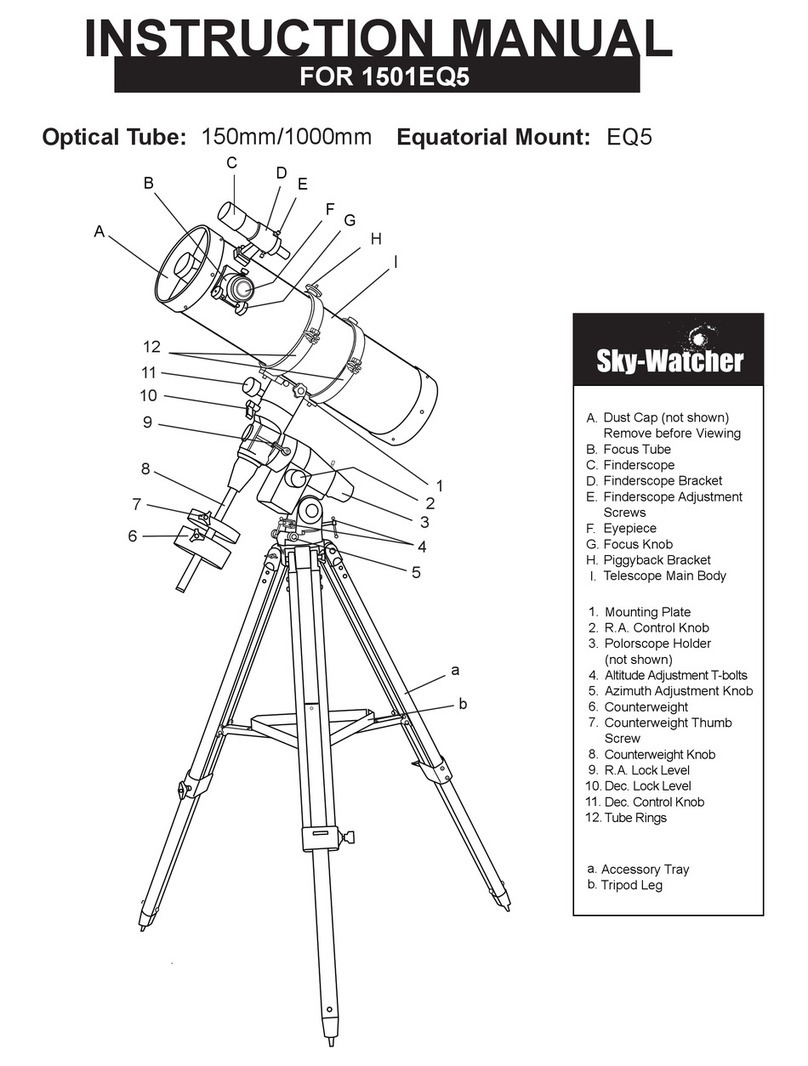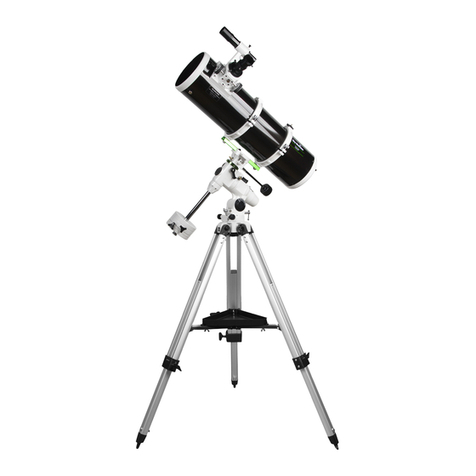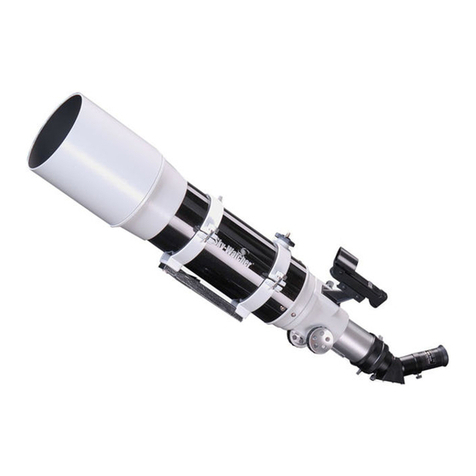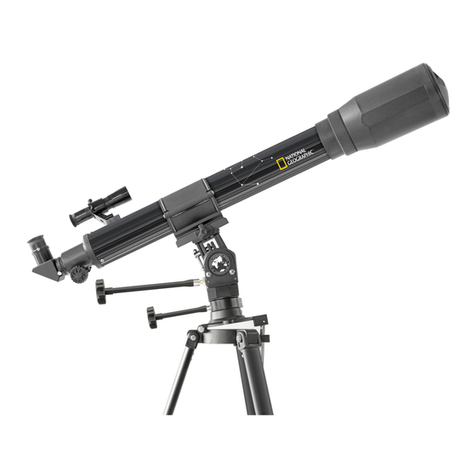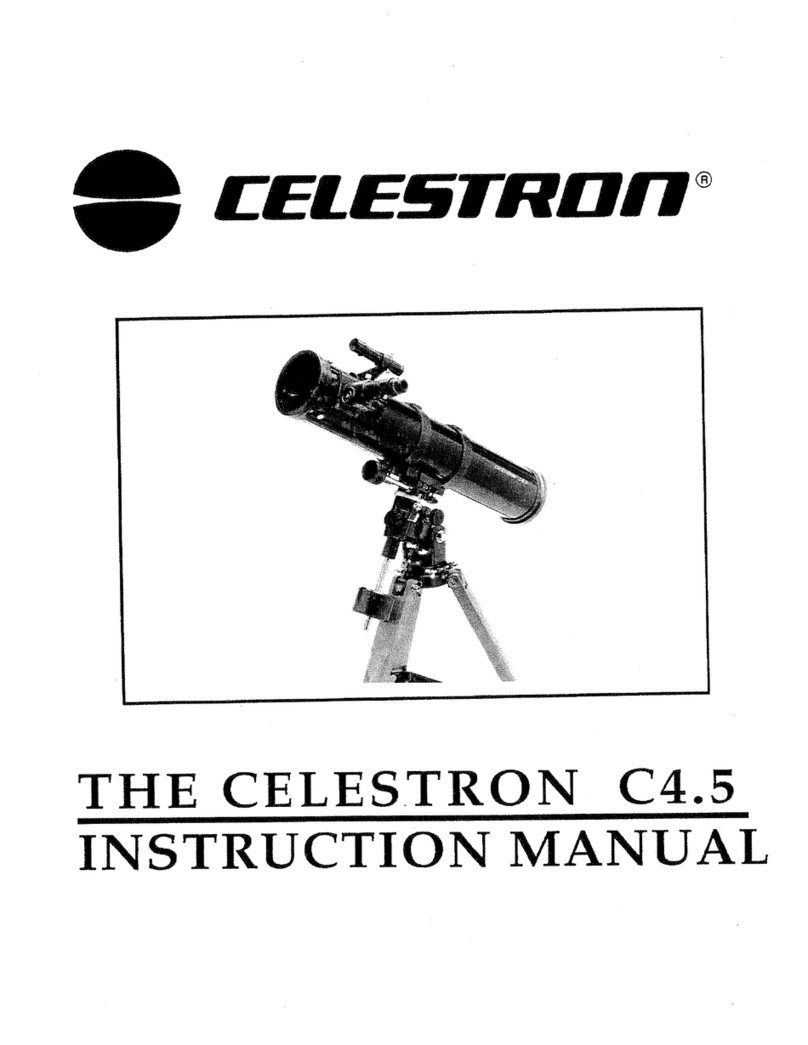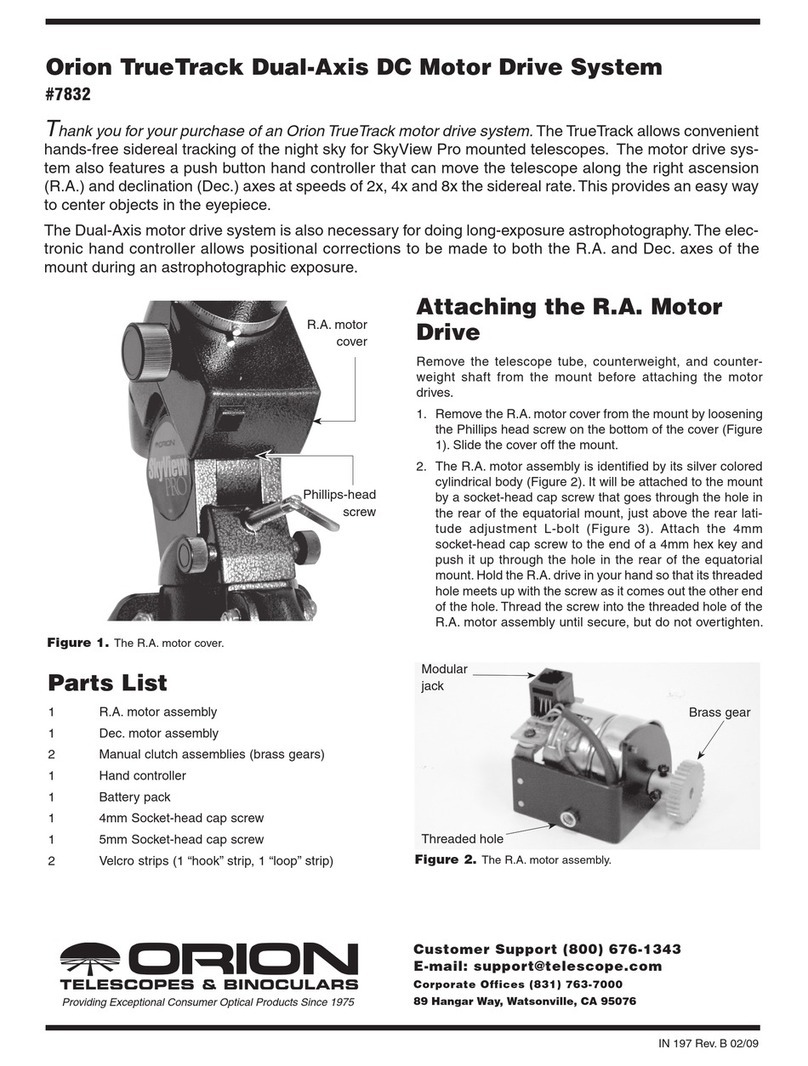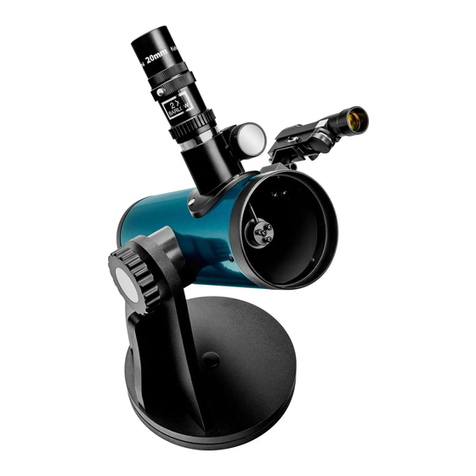
6
The polarscope supplied with the EQ6 Mount can be used for
simple or precise polar alignment. Simple method of polar
alignment described here is sufficient for casual visual use of
the telescope. See Appendix A-Enhancing the Precision for
accurate polar alignment method.
Remove the caps from the upper and lower ends of the Right
Ascension (R.A.) axis (Fig.e) so you can look into the
polarscope. Rotate the mount in declination axis so that the
hole in the shaft is in front of the polar scope. This allows you to
see all the way through the Right Ascension shaft. If possible,
this procedure should be carried out while the telescope and
counterweights are on the mount. This prevents the mount from
becoming misaligned when the load on the tripod is changed.
Leveling the tripod will make it easier to use the Azimuth and
Altitude adjustments on the mount when trying to center the
stars in the polar scope. The tripod can be made level by using
a bubble level or carpenter's level.
Looking through the polar scope, lines should be seen super-
imposed on the sky. Figure e-1 shows the view through the
pole finder. Line drawings representing the Big Dipper and
Cassiopeia are used for the Northern Hemisphere. The third
line drawing represents Octans and is used for the Southern
Hemisphere. The circle in the center of the field indicates the
path Polaris makes around the North Celestial Pole.
Before using the polarscope for the first time, it is
recommended that you perform the following polarscope
alignment. This only needs to be done once unless the
polarscope has been removed from the mount.
Polarscope alignment
The optical axis of the polarscope is already aligned with the
rotation axis of the mount. The optical axis of the polar scope
can not be adjusted. This is set permanently at the factory. The
reticule in the polar scope must be centered on the optical axis
of the polar scope. When this is true, the reticule in the polar
scope will be parallel to the rotation axis of the mount. If this is
not the case, accurate polar alignment will not be possible.
Locate Polaris and place it in the center of the polarscope by
adjusting the Altitude and Azimuth of the mount. Place Polaris
directly under the cross in the center of the reticule (Fig.e-2).
Rotate the mount one half turn about the R.A. axis. Polaris
should remain under the cross in the center of the reticule. If it
does not, the reticule is not centered on the R.A. axis of the
mount.
To move the reticule, adjust the three small setscrews on the
polarscope (Fig.e-3). Make small adjustments by moving only
two of the screws at a time. You will have to alternately loosen
one and then compensate for the slack by tightening the other
screw. Adjust the screws slightly, less than one-quarter turn at a
time, to move Polaris half the distance back to the center of the
reticule (Fig.e-4). This is because Polaris started in the center of
the reticule. By rotating the mount 180 degrees, Polaris moved
Fig.e
Fig.e-1
Fig.e-2
Power
on
off
Polaris
NCP
Octans
C
a
s
s
i
o
p
e
i
a
B
i
g
D
i
p
p
e
r
Polaris
NCP
Octans
C
a
s
s
i
o
p
e
i
a
B
i
g
D
i
p
p
e
r
Place Polaris here
Fig.e-3
1
2
E
W
20
20
10
10
0
12
adjust these
screws
